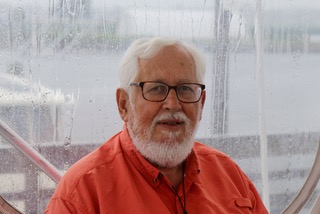 By Daniel Chapelle, creator of Meditative Self-Care
By Daniel Chapelle, creator of Meditative Self-Care
Meditative Self-Care brings extra lightheartedness into our lives by decreasing any dissatisfaction we could also be experiencing.
Its beginning premise is what the Buddha found: We undergo from who we predict we’re. From second to second, we consider we’re someone or one other. That self-perception is made up of a mix of components which can be secure and acutely aware and others which can be much less so. As we’ll see, it’s the supply of all our unhappiness. If we need to lighten the load of dissatisfaction in our lives, we should let go of beforehand unrecognized beliefs about who we’re. Meditative Self-Care helps us try this.
There are totally different ranges of self-perception. The primary issues what the Chinese language thinker Confucius thought-about our position on the planet. Right here, we outline ourselves in acquainted phrases: employer or worker, guardian or son or daughter, pupil, married or not, retiree, and so on. That is who we consider we’re. Meditative self-care promotes what Confucius and the Buddha taught: If we need to reside a superb life, we should carry out our position in addition to we will, even when—particularly if—that position is difficult. The best way to try this is to carry out it with precision and virtually as if it have been a private ritual. A activity we might in any other case dislike turns into much less disagreeable, even nice, once we carry out it to the easiest of our potential. That’s as a result of there is no such thing as a room to be sad once we are absolutely centered or “within the movement.” An artist may be sad earlier than and after his inventive work however not throughout it. The identical goes for all of us once we are absolutely centered on the right here and now of our exercise at hand.
On the subsequent degree of self-perception, issues turn out to be fuzzier across the edges. If, as an illustration, we’re nurses or academics, will we are typically usually form and beneficiant with our time, consideration, and curiosity? Or are we regularly impatient and fewer than pleasant? Right here, we’re speaking about recurring conduct patterns or secure persona traits. These give us our fame amongst these round us and our acquainted and repeated expertise and conduct patterns. Meditative self-care exhibits us issues about these patterns and ourselves we might not have realized earlier than. That advantages each us and others.
At a extra transitional degree, our regular expertise and conduct patterns can fluctuate. For example, even the kindest nurse can have a foul day, and the friendliest instructor can generally be impatient. Meditative self-care helps us higher perceive the reason for these fluctuations, permitting us to cut back the undesirable ones. It exhibits us that change and private improvement are potential.
On the subsequent degree of self-perception, issues are extra fleeting and fewer straightforward to note except we study to concentrate. That is the extent of changeable emotions, sudden temper swings, ideas, and impulses that, like lightning, seem instantly in our expertise and seemingly out of nowhere. Meditative self-care makes us conscious of all that flits via our minds. It’s the place studying how our minds work begins in earnest. Right here, it turns into personally performed consciousness science within the strictest sense. This entails the meditation a part of meditative self-care. It’s the place the sluggish course of of private change occurs. We are able to examine it to studying to play a musical instrument: The training is sluggish and by no means completed, and it requires the three Ps of Follow, Endurance, and Persistence.
There’s one final and radically totally different degree of consciousness. However earlier than we go there, we should take a look at the precise observe of meditative self-care.
II
That precise observe entails meditation as its lively ingredient. Right here, we sit in a quiet place and switch our consideration inward. In a typical situation, we concentrate on the bodily sensations of simply sitting and respiration. There’s nothing else to do and nowhere else to be. There’s nothing to determine, analyze, perceive, or resolve. There’s solely specializing in the bodily sensations of simply sitting and respiration. There’s nothing to attempt for or accomplish, nothing to hope for, and nothing to anticipate.
This seemingly straightforward factor—for it means not doing something—is just not really easy however a problem. That’s as a result of our thoughts compulsively needs to do one thing. It wanders to different issues, like a hyperactive monkey leaping from one factor to a different. The problem is to maintain bringing our consideration again to the bodily sensations of simply sitting and respiration time and again.
At first, once we uncover how hyperactive our monkey thoughts is, this appears virtually unimaginable, and we might imagine we’re unfit to meditate. However ultimately, our consideration slows down and begins to relaxation as an alternative of leaping round from this to that. It turns into simpler to remain on the meditation object longer. Emotions of quiet and calm ultimately set in. That is nice sufficient when it occurs, however it’s not the aim of meditation or meditative self-care. However what, then, is the aim? The aim is to cease figuring out with who we predict we’re.
We start by recognizing that our untrained thoughts tends to chase the whole lot that seems in consciousness. Like a canine, we chase after each stick thrown earlier than it. As a substitute of staying centered on simply sitting and respiration, we discover ourselves distracted by and reactive to different issues that seem in our consciousness: ideas of issues now we have to do, issues we’re having, conflicts, flitting concepts that appear to come back from nowhere, disappointment that hangs over us like a darkish cloud, unfavourable and indignant or hostile ideas, or wounded emotions we’re nonetheless nursing lengthy after a painful occasion, and so on. The psychological content material of this lived expertise retains us and our psychotherapists busy. As Freud put it, it’s the grist for the mill of psychological evaluation. It’s the materials that goes into self-perceptions constructed on largely unconscious self-images. And it’s the perception within the actuality of those self-images that makes up our unhappiness. Therefore, “we undergo from who we predict we’re.”
The problem is recognizing “who we predict we’re” at any second when one thing bothers us. Are we maybe like spoiled kids who get irritated and indignant once they don’t get their means? Are we overly delicate to precise or perceived insults and accidents? Are we like entitled royalty anticipating everyone to bow to our each want? Changing into extra conscious of this stuff improves our lives and relationships—with others and with existence itself. However there may be extra. As soon as we will clearly see these unhelpful and fewer than absolutely acutely aware identifications, we will extra simply let go of them. They don’t have to stay to our greatest persona traits like annoying Velcro that sticks to our favourite garments.
III
We now come to the actual aim of meditative self-care, which is about greater than emotions of leisure or well-being and improved self-observation. And it’s about greater than releasing us not solely from particular unhappy-making self-identifications or beliefs about who we’re. It’s about starting to finish the very behavior of forming these identifications.
We start by seeing that now we have been clinging to made-up concepts about ourselves by believing them. For many people, these unhappy-making self-images are our most unique and distinctive creations, for we don’t want a instructor to learn to make ourselves sad. We try this spontaneously and creatively with the self-images we select to consider. As others have mentioned, we’re at all times practising one thing, and what we observe most is our unhappiness. Not solely can we let go of these beliefs by recognizing that they’ve been imaginings, however we ultimately notice that even the concept of getting or being a definable private self is a false impression.
How will we get to that view? By wanting carefully at our experiences as we reside them and seeing that they’re nowhere however in “awareness-itself”—“Rigpa” in Tibetan. However what is that this “awareness-itself?”
Once we take a look at something round us or any a part of our physique, we ask essentially the most penetrating meditative query: “The place is it?” The reply appears apparent: “Proper there.” However then we ask: “The place is that there, that thereness?” Right here we’re stumped. We notice that there or thereness is an idea, an thought, not a factor or perhaps a high quality we will level at. Once we counter: “I do know it’s there as a result of I can see it,” once more, we ask: “The place is that figuring out, that seeing?” What we’re taking a look at or enthusiastic about exists as an look in awareness-itself. The thinker Schopenhauer mentioned this within the opening line of his well-known e-book, “The world is my notion”—“Die Welt ist meine Vorstellung” within the unique German.
When that realization turns into clear and a instantly felt expertise, not simply one other intellectually fabricated thought, the notion and perception that we’re an identifiable and definable self, an entity that exists as an impartial being, dissolves. As a substitute, we uncover that we aren’t an independently present being or entity however awareness-itself. And that awareness-itself, that Rigpa, is insubstantial. It’s extra like nothing than one thing. But it provides us the whole lot that’s our life.
Consciousness-itself makes all data potential, but it surely can’t be referred to as an object of information. We can’t know Rigpa or awareness-itself as an entity alongside different entities. We are able to solely realize it by likening it to or by analogy with issues presumed to be higher understood. A conventional analogy is that of house. Simply as house itself can’t be grasped or pointed to although it’s all over the place and accommodates the whole lot in it, so can also consciousness itself not be identified although it consists of all that we will know or expertise. Or it’s like silence that underlies and accommodates all sound and fury—or like an everlasting stillness that accommodates all movement, commotion, and drama, or like a mirror that may replicate the whole lot with out being affected by any of it.
That’s the final aim of meditative self-care: a frame of mind or consciousness that transcends our regular perceptions and self-perceptions, resulting in a profound understanding of our true nature, which is awareness-itself. Since our regular perceptions and self-perceptions dissolve at this level, all emotions of unhappiness related to our self-images dissolve together with them. That is what the Buddha meant by liberation from samsara, the unhappiness of on a regular basis life.
******
For extra info, see the e-book Meditative Self-Care. The creator may be contacted on his web site, meditativeselfcare.com, or at
.












